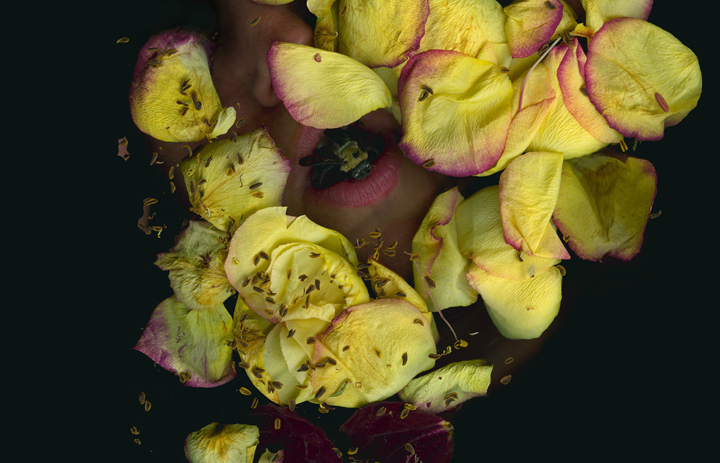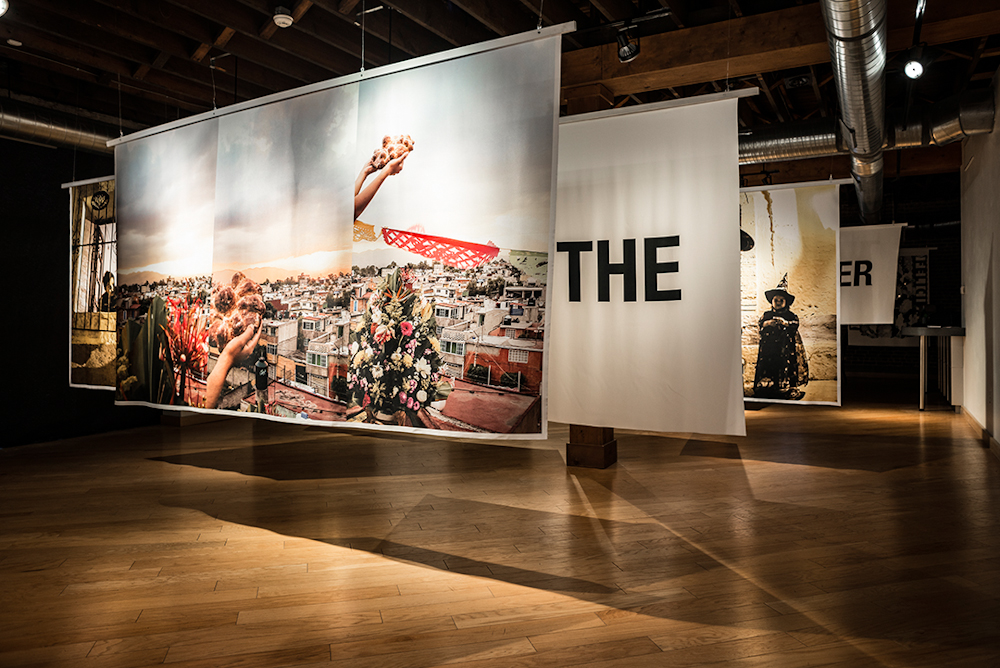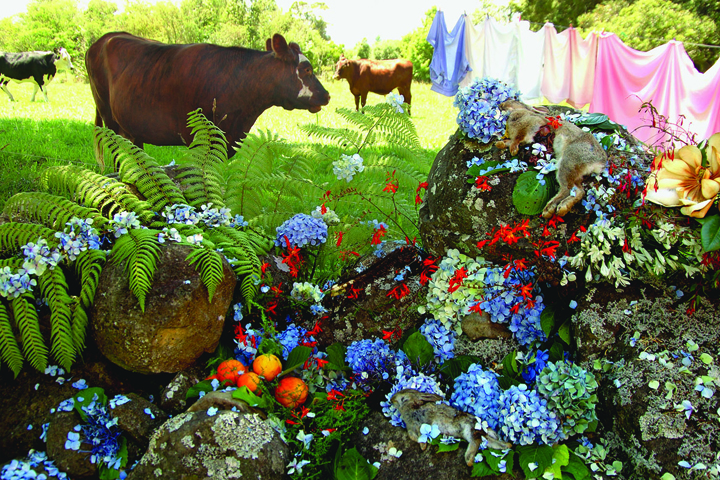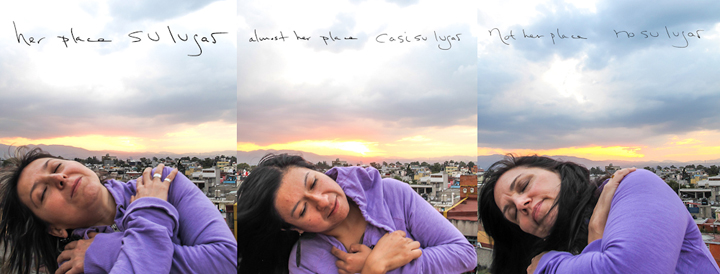
Linda Adele Goodine, Bee Kiss, 2007-2010
Linda Adele Goodine has been creating provocative thoughtful artwork for over 30 years. As both an educator and artist she has continually exposed others to manifestations of the classical concepts and modern interpretations of “beauty and truth,” sustaining dialogue across disciplines and generations, and investigating, as well as pursuing, the goals of social justice through education and collaboration. Adele states, “I have tried to distinguish myself as an artist-teacher capable of interacting with complex communities working toward common goals.”
Can you discuss your current work. What are you photographing or making now?
Poetry and literary references have always been a rich source of inspiration for my working process. Stanzas from poetry, imagistic figures from the Magic Realists, have been starting and ending points, often times becoming the titles of completed works as seen in the Seneca Honey Series. Much of my work is created in that liminal space between dreaming and seeing.
In the Gibson Lemon New Zealand, the nighttime backdrop has given way to the blatant daylight. The constructed or performative image continues to engage me as an image-maker. This work is more overtly political. Playing with the history of the still-life in one frame, layering foreground, middle ground, and background, to create a relevant historical, social and cultural document. These records are designed to serve as not only a timely record of place, but as a vehicle for the exploration of rich conceptual and environmental themes. America’s relationship to land and nature, specifically its resonance to farming and the harvest; the idea that nature is continuously manipulated for display and consumption.
The most recent work titled, “Made in Mexico, her place, almost her place, not her place”, the Mexican and United States populations are indelibly bound through shared heritages, popular holidays, entertainment, as well as through business relationships.
The war on drugs defines roles for production and consumption, similar to the Disney Corporation indoctrinating Mexican children into American princess fantasies. This installation made of sound, image and text is dedicated to the true heroes; the journalists and photojournalist who lost their lives while exposing the covert activities of the drug cartels. It is my intent to show solidarity with these Mexican families who seem condemned to live their lives in fear of violence. I would also like to challenge the concept of borders that artificially separate and distinguish the entities and identities on each side, similar to the way we simplistically place a border between what are called originals and translations. The concept of translation is integral to contemplating the war on drugs as it is not merely a problem from Mexico translated to US soil, but is part of a shared war, and, although the rhetoric has often dwelt on an us/them dichotomy, the United States, since its conception, been composed of a great number of Mexicans. In today’s world, global events are no longer foreign. I make this work to champion tolerance and celebration of differences, stressing the importance of multicultural and educational exchange between the U.S. and Mexico, and finally, address a history of inattention towards Mexico.

Linda Adele Goodine, Instillation, Mexico
La gente de México y de Estados Unidos está integralmente unida a través de herencias comunes, fiestas populares, entretenimiento y relaciones comerciales.
La guerra contra las drogas define los roles de producción y consumo de modo similar a la manera en que la Corporación Disney adoctrina a los niños mexicanos con respecto a las fantasías americanas sobre princesas.
Dedicamos esta instalación artística compuesta de sonidos, imágenes y textos a los verdaderos héroes: los periodistas y fotógrafos periodísticos que perdieron sus vidas mientras develaban las actividades encubiertas de los carteles de drogas. Es nuestra intención mostrar solidaridad con las familias mexicanas que parecerían estar condenadas a vivir con miedo a la violencia. También nos gustaría cuestionar el concepto de las fronteras que artificialmente separan y categorizan las entidades e identidades de cada lado, del mismo modo simplista en el que colocamos fronteras entre lo que denominamos original o traducción. El concepto de traducción es crítico en relación a la guerra contra las drogas ya que no es simplemente un problema de México traducido al terreno de los Estados Unidos, sino una guerra común a ambos países. Aunque el lenguaje suele presentarse en una dicotomía de tipo “ellos vs nosotros”, siempre ha habido muchos mexicanos en los Estados Unidos. En el mundo actual, los acontecimientos nacionales ya son globales. Estamos realizando este trabajo para promover una mejor y mayor tolerancia, celebrar las diferencias, enfatizar la importancia del multiculturalismo y los programas de intercambio entre los EEUU y México y, finalmente, para abordar la historia de la desatención hacia México por parte de Estados Unidos.

Linda Adele Goodine, Koru Rabbit Looking for Peter for Postcard, 2005-2007
A curious and romantic social critic
What do you hope to accomplish in the future? Are there any specific projects that you would like to pursue or complete?
I will always make the tableaux. But the next year will be spent editing video and audio from Mexico.

Linda Adele Goodine, Her Place Almost Her Place Not Her Place, 2011-2014
Linda Adele Goodine has received numerous awards during her extensive career, including an Aaron Siskind Foundation Fellowship (1991), Efromyson Fellowship Central Indiana Foundation (2005), the Indianapolis Art Commission’s Creative Renewal Grant (2003,2014), Indiana Arts Council Individual Grant (2002, 2007), and The Southern Federation for the Arts Fellowship NEA (1991), and the NEA Interarts Program/Rockefeller Foundation New Forms Florida Grant collaboration with Chuck Badland (1990), and the Florida State Art Council also awarded me an Individual Artist Grant (1985).
Interview by Chester Alamo-Costello


